Will the Real Animals Please Stand Up?
Who are the real animals in Israel's on-going war on Gaza: Hamas, or the Israeli government? You decide.
Israel Defense Forces (IDF) video on the October 2023 attack on Israel by Hamas and its allies. Source: IDF
On October 7, 2023, the Islamic Resistance Movement (commonly called Hamas), launched its Operation Al-Aqsa Flood, a daring, brutal, land, sea, and air attack on Israel from the Gaza Strip. Over a three day period, Hamas fighters rampaged through Israel, killing, maiming, and kidnapping people, and destroying property. The Hamas-led attack, in which 1,139 lives were lost was the worst Israel had seen since the Holocaust ended, 78 years earlier. The Israeli authorities made an unsubstantiated claim that Hamas fighters also committed mass rapes, sexually abused Israeli civilians, and beheaded Israeli babies.
After recovering from the shock of the brazenness of Hamas, the Israeli Defense Forces (IDF) launched Operation Swords of Iron, starting with its first retaliatory strikes on the Gaza Strip. On October 8, Israel’s Prime Minister Benjamin Netanyahu declared a state of War, and aimed to eliminate Hamas’s military capabilities, and end its rule in Gaza.
On October 9, the Israeli Minister of Defense, Yoav Gallant declared that Israel would impose a “total” blockade on the Gaza Strip. Gallant said that Israel would cut off electricity supply to the Strip, and block the supply of fuel and food because they were fighting “human animals” and were “acting accordingly.”
During the first six days of its war on Hamas, Israel dropped 6,000 bombs, far more than the maximum number of bombs dropped in any given month from 2015 to 2019 during Operation Inherent Resolve, the US military’s multinational campaign against Islamic State in Iraq and Syria (ISIS). Nine days into Israel’s retaliation, 47 families, consisting of over 500 civilian individuals, were entirely wiped out by Israeli bombing of residential buildings.
Israel’s ground offensive came on October 27, when the IDF attacked Hamas assets and personnel in Northern Gaza. Thus started Israel’s scorched-earth Gaza campaign, based on its Dahiya Doctrine, which calls for the large-scale destruction of civilian infrastructure to make the civilian population turn against a government hostile to Israel.
IDF bombing of Gaza Strip. Oct. 25, 2023. Source: Mondoweiss
Since October 2023, Israel has deliberately aimed at destroying every aspect of life in the Gaza Strip, including medical and educational facilities, as well as agriculture, industry, commerce, and infrastructure. The IDF, which some call the Israeli Occupation Forces (IOF) has also killed, injured, and maimed men, women, and children, young and old, entire families, journalists, medical workers, educationists, and students, and done so with impunity. Furthermore, Israel has prosecuted its war on Gaza with the iron-clad support of Western countries, especially the European Union and the United States, which have provided Israel with an endless supply of weapons and ammunition.
As of December 2024, Israel had carried out 591 attacks on healthcare facilities in Gaza, and by January 2025, these attacks left 50 percent of the 36 the Strip’s hospitals partially functional. Only 6 out of 11 field hospitals were fully functional, and only 6 (4 precent) of the 139 primary health care centers were fully functional. As of May 28, 2025, 1,580 health sector workers in Gaza were killed by Israel.

Patients in Gaza health care facilities were also killed by various acts committed by the IDF. For example, five patients died in Nasser hospital after an IDF raid left it “without electricity, water, food, and heating.” Four people died (some burned alive), and 70 were injured in a fire caused by the seventh IDF attack on the Al-Aqsa hospital complex in Central Gaza. Although Israel has claimed that Hamas has used civilians as human shields, and used hospitals in Gaza as command centers, it has not been able to substantiate these allegations.
As of April 2024, the IDF destroyed at least 60 percent of educational facilities, including 13 public libraries, and as of January 2024, destroyed all universities in the Gaza Strip. The IDF has also been committed “scholarsticide,” i.e. the killing of academics and students. By March 2024, Israel had killed 98 university presidents, deans and professors, and deprived 88,000 university students of receiving university education. As of February 2025, over 658,000 students and 87,000 tertiary level students had no access to formal learning spaces. In addition, as of April 2025, 13,677 students and 663 educational staff were killed and almost 21,900 students, and 2,825 teachers were injured by the IDF.
As of June 16, 2025, 177 Palestinian journalists were killed by the IDF in Gaza, 86 journalists were arrested, and 2 were reported missing. Furthermore, the number of Palestinian journalists killed by the IDF in 19 months (less the one month truce) of war against Gaza is more than double the 69 journalists killed in World War II (which lasted 6 years), and almost three times the 63 journalists killed in the Vietnam War (which last 19.5 years).
In addition, 75 percent of the 99 journalists killed around the world in three months of Israel’s war on Gaza in 2023 were Palestinian journalists working in Gaza. Many journalists were killed by IDF airstrikes while they were at home, and their family members were often killed with them. Israel has also bombed at least 73 media outlets, and all of Gaza’s radio stations have closed because of bombardment, power outages, or the killing or displacement of staff.

The IDF also systematically destroyed the cultural heritage of the Palestinians, in addition to killing Palestinian artists, writers, actors, and film makers. By February 1, 2024, the IDF had destroyed or damaged 12 libraries and 7 museums (including the Khan Younis Museum, which contained 3,500 archaeological and historical artifacts, some dating back as far as 4,000 BCE). As of April 8, 2025, the IDF had destroyed 89 cultural sites, including 69 buildings of historical and/or artistic interest, 9 monuments, and 7 archeological sites in Gaza.
Israel has also committed necroviolence and as of January 2024, the IDF had desecrated 16 cemeteries in Gaza by bulldozing them, as well as establishing military outposts and building roads in them. In their search for hostages held by Hamas, the IDF took away corpses supposedly to ensure “optimal professional conditions and respect for the deceased.” Israel has practiced such necroviolence for decades now, burying Palestinians in so-called “cemeteries of numbers” where graves are marked with numbers rather than names, and have used these bodies as bargaining chips in negotiations with Palestinians. As of January 2025, Israel had completely destroyed and violated the sanctity of 19 cemeteries, by exhuming graves, and removing bodies, and as of July 2, 2025, the IDF had partially or completely destroyed 40 cemeteries in Gaza.
Palestinians have also endured arbitrary detentions, torture and executions at the hands of the IDF since the start of its on-going war on Gaza. By December 2023, Israel had detained 8,000 Palestinians, and subjected them to stripping of their clothes, as well as blindfolding, beating, harassing, and sexually assaulting them. In addition, the Israeli authorities deprived Palestinian detainees of food, water, sleep and basic hygiene. The prisoners were held under an administrative detention policy which enables Israel to arrest and detain Palestinians for extended periods without charge or trial.
The IDF has often re-arrested Palestinians released under the prisoner exchange programs and arrested more Palestinians to compensate for the numbers released. In addition, the IDF has barred Palestinian families from celebrating the release of their loved ones from Israeli detention.
Barely 10 days after the Hamas attack in October 2023, IDF troops carried out dozens of arbitrary executions and physical liquidations of civilians. In December 2023, IDF troops stormed a UN-run school sheltering civilians, and executed at least seven men, women, and children in cold blood.
The IDF has also waged a campaign against Gaza’s housing, in line with its Dahiya Doctrine. Thus, the IDF bombing had destroyed over 70 percent of homes in Gaza by December 2023, and 80 percent of Gaza’s buildings by August 2024. As of April 15, 2025, 92 percent of housing units were destroyed or damaged, and 1.9 million people were in need of emergency shelter and essential household items.
This widespread and deliberate destruction of homes to make them uninhabitable and prevent the displaced people from returning has been termed “domicide.” The destruction and damage caused to housing in Gaza was, by January 2025, estimated at $545 million, with an estimated $15.2 billion being needed over the next five to eight years for the recovery of the housing sector.
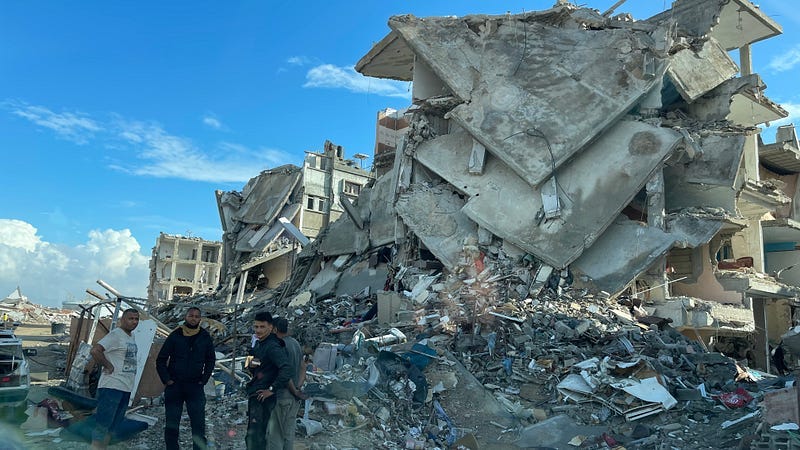
The transport infrastructure in Gaza has also been ravaged by the IDF. By January 2024, the IDF had also damaged or destroyed 92 percent of primary roads, and two thirds of all roads in Gaza. The IDF also destroyed numerous vehicles, impeding mobility family reunification, as well as relief aid and services. Furthermore, the IDF cut up the Strip by building four East-West corridors and took over the Philadelphi Corridor from Egypt to facilitate their movement in the Strip and further restrict and control the movement of Palestinians.
Except for the Philadelphi Corridor, these corridors use a lot of land, and their construction led to the destruction of many homes, greenhouses, and other infrastructure. For example, the IDF destroyed 750 Palestinian buildings and a university to build the 12-Km wide Netzarim Corridor. Damages to the transport sector infrastructure by October 2024 was estimated to cost $2.5 billion, and requiring an estimated $2.9 billion for immediate, medium-term, and long-term interventions to rebuild.
Israel has, since 1967, also had a stranglehold on Gaza’s telecommunications infrastructure, and has restricted the importation into, and installation of telecommunications equipment in Gaza, and destroyed such equipment at will. In addition, Palestinian telecommunications services providers must go through Israeli companies to get access to the global internet, thus increasing the cost of internet access in Gaza, and Israel’s control of Palestinian access to the internet.
The IDF, in its war on Gaza, has also attacked Gaza’s telecommunications infrastructure, destroying buildings, equipment and communications towers, and depriving telecommunications companies of fuel to run their standby generators. By October 27, 2023, Gaza’s telecommunications and internet connection to the world had collapsed. By mid-April, 2024, 75 percent of Gaza’s mobile phone towers were out of service, and by October 2024, almost 74 percent of the assets of the information and communications technologies (ICT) assets were completely destroyed. By November 2024, Gaza experienced approximately 16 telecommunications blackouts. The IDF also destroyed the offices of information technology companies, startup incubators, and technology centers. The total cost of damages to the ICT infrastructure was estimated at $164 million, losses over five years were projected to reach $736 million, and the total reconstruction and recovery needs of the ICT sector in Gaza was estimated at $460 million as of October 2024.
The IDF also deliberately killed telecommunications workers attempting to repair damaged equipment, deliberately killed IT experts in Gaza some of whom were among the finest in the world, and were killed with their entire families — including pregnant women.
Israel has firm control of water supply to the Palestinians through various Military Orders and the provisions of the Oslo Accords. Prior to Israel’s 2023 invasion, the main source of fresh water supply for Gaza was the Coastal Aquifer which has been over-exploited and severely depleted, leading to seawater intrusion, as well as pollution from untreated sewage and agricultural chemicals. By 2017, 97 percent of the aquifer’s water did not meet WHO water quality standards, and most of Gaza’s population relied on private water tankers and small-scale desalination plants for their drinking water. Palestine also purchased 22 percent of its water supply in 2017 from Israel’s national water supply company, Mekorot.
Israel’s war on Gaza made the water supply situation there more desperate. By July 2024, the amount of water available to Gaza decreased 94 percent compared to pre-invasion levels. As such, Gazans had an average of only 4.7 litres of water per person per day (pppd) for all their needs; just under a third of the internationally accepted minimum of 15 litres pppd in emergency situations. Gaza lost 84 percent of its water production by May 2024 because the IDF had destroyed its water infrastructure and restricted the supply of fuel, electricity, as well as spare parts. Furthermore, the supply of water from Mekorot fell by 78 precent. By June 2024, Gaza City had lost 88 percent of its water wells, and 100 percent of its brackish water and seawater desalination plants were out of service because they were damaged or destroyed by the IDF.
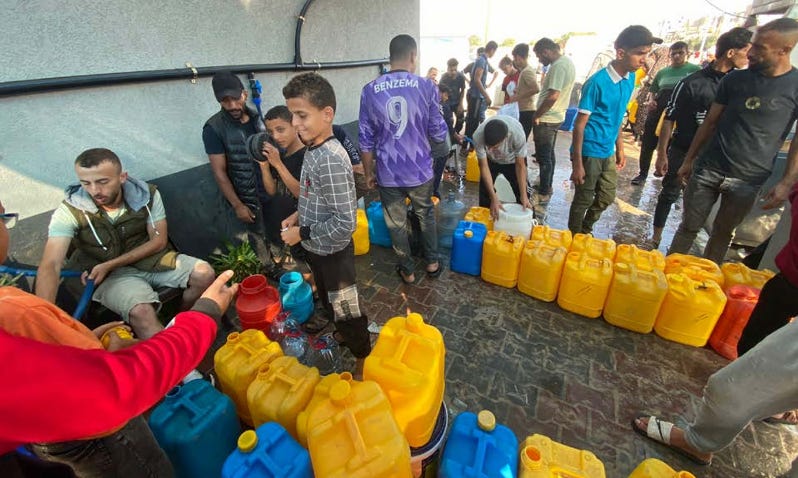
Gaza faced significant environmental challenges before the start of Israel’s on-going war against Hamas. Among these challenges were a freshwater crisis, pollution of the marine environment, and contamination of soil, water, and air. In addition, forests and woodlands were threatened, and environmental management was fragmented and underfunded.
Israel’s war on Hamas has had devastating environmental consequences in Gaza by interrupting ecosystem services (i.e. benefits such as clean air, water, and climate regulation provided by the environment to human beings), as well as environmental management systems and facilities, and contaminating the environment with hazardous materials and chemicals. By early June 2024, the IDF had destroyed 70 percent of all sewage pumps, and by the end of that month, they had destroyed 100 percent of all wastewater treatment plants in Gaza. Untreated wastewater is now released into the sea and on land, causing significant environmental pollution and disease outbreaks. In addition, the IDF’s destruction and flooding of tunnels, and the discharge of oils, fuel, and other hazardous materials from destroyed buildings and electrical installations has contaminated soil and water resources in Gaza.
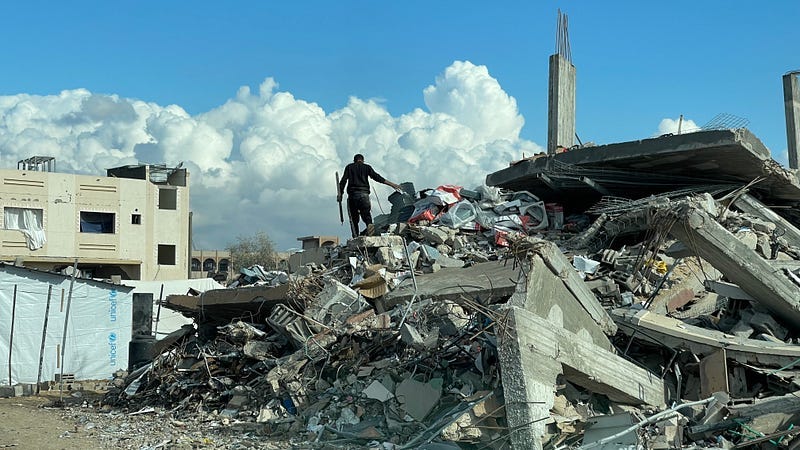
The IDF has also destroyed much of Gaza’s solid waste management facilities, and rendered landfills dysfunctional and/or inaccessible, leading to uncontrolled dumping of solid waste, including medical waste. The IDF’s bombardment of Gaza also produced, as of December 2024, an estimated 41 million to 47 million tonnes of debris, which contains human remains, and an estimated 2.3 million tonnes of which could potentially be contaminated with asbestos. In addition, the destruction of solar power installations has increased the amount of hazardous material released into the environment including, as of March 2024, 1,675 Kg of lead.
Debris from the IDF’s bombing of Gaza also contains thousands of unexploded bombs and ammunition which will take years to dispose of, contaminate soil and water sources, and pose long-term risks to lives, as well as human and environmental health. In the same vein, dust from constant IDF bombing, and the resulting fires, and collapsing buildings cause air pollution.
Gaza has always had a precarious energy supply situation under Israeli occupation, mainly because of Israel’s Military Orders, starting with Military Order 159 issued in November 1967 to place electricity infrastructure in Occupied Palestinian Territories (OPTs; including Gaza) under Israeli control. In the same vein, the Oslo Accords further tightened Israel’s control over Gaza’s electricity supply.
Palestinians could thus not develop the infrastructure to meet their electricity needs, and were heavily dependent on Israel for electricity supplies. In 2017, Gaza spent $769.7 million (22 percent of its GDP) on importing electricity and other energy products from Israel. By September 2023, Israel supplied 64.2 percent of Gaza’s electricity, while Gaza Electricity Distribution Company (GEDCO) supplied 35.8 percent of Gaza’s electricity. However, the amount of electricity provided by Israel and GEDCO was only 42 percent of Gaza’s total needs.
Although solar power use in Gaza increased exponentially in the past decade or so, with the area of solar panels increasing from 115 square meters in 2012 to 200,000 square meters in 2019, Israeli restrictions of access to solar energy equipment, as well as successive Israeli attacks on solar energy infrastructure have limited the contribution of solar power to meeting Gaza’s energy needs.
The already precarious energy situation in Gaza has been made worse by Israel’s war on Gaza. On October 8, 2023 (a day after Hamas’s attack), Israel cut off its supply of power to Gaza, and by October 11, Gaza’s only power station had completely run out of fuel and stopped generating electricity. As of January 2024, 61.5 percent of Gaza’s power grid had been destroyed by Israel, and by March 2024, an estimated $500 million worth of damage had been done to Gaza’s energy infrastructure. Furthermore, Israeli bombing and destruction of government, civil and private facilities as well as Palestinian homes damaged 90 percent of the solar energy systems in Gaza.
The IDF’s war on Gaza has not spared religious facilities and personnel. As at January 2025, the IDF destroyed or damaged 1,109 mosques and three churches in Gaza. The IDF completely destroyed 834 mosques, including Gaza’s oldest, the Great Omari Mosque with its 1,400 years-old minaret. The IDF also partially or severely damaged 215 mosques and destroyed 643 religious endowment properties. In addition, the IDF killed 315 mosque officials and employees, including Imams, as well as Islamic scholars, Quran instructors, and Islamic preachers. IDF troops filmed themselves burning and desecrating the Holy Quran, acts which the IDF oddly enough, condemned.
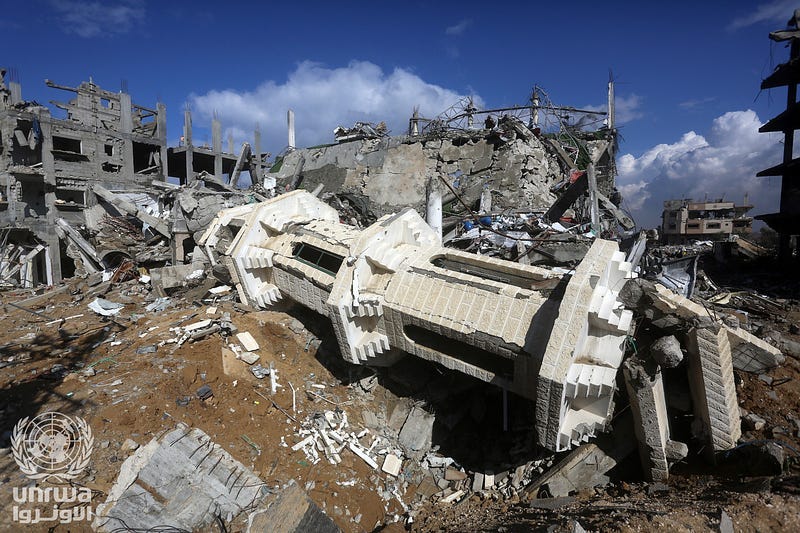
Israeli’s tight grip on all aspects of life in Gaza had adverse impacts on trade and industry in the territory. Gaza’s industries faced enormous challenges such as restrictions to movement, as well as of access to finance and markets. In addition, businesses struggled to operate with only 11 to 16 hours of electricity per day, while investments were deterred by perceptions of instability and high risk.
Israel’s war on Gaza worsened the situation, and by October 2024, 66 percent of Gaza’s establishments in the commerce and industry sector were destroyed, and 22 percent of them were partially damaged. Economic activity in Gaza also dropped drastically by the end of 2024. Thus, construction and industrial activity dropped 98 percent and 90 percent, respectively, while agriculture and services activities dropped 91 percent and 81 percent respectively. As a result, Gaza’s contribution to the Palestinian economy decreased from about 17 percent before October 2023 to less than 5 percent by the end of 2024, despite the fact that the Gaza Strip is home to 40 percent of the Palestinian population in the OPTs.
The total cost of IDF’s damage to Gaza’s industry and commerce sector was estimated to $5.9 billion as of October 2024, while the projected losses over a five-year period were estimated at $2.2 billion. It is estimated that Gaza will need $6.9 billion over a period of eight years after the end of hostilities to meet the recovery and reconstruction of its industries and commercial entities.
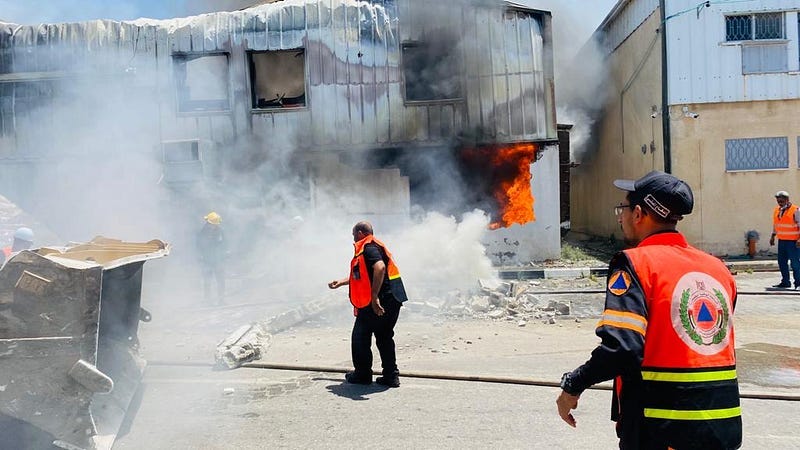
The finance sector also suffered immensely under Israel’s control before the outbreak of its war on Gaza in October 2023. The banking sector, for example, was hampered by its dependence on unstable government revenues and remittances (all of which were controlled by Israel), while political instability limited lending. Furthermore, the dependence on Israel’s currency limited the control of the Palestine Monetary Authority over monetary policy.
The IDF’s war on Gaza resulted in an estimated $14 million worth of damages to the Strip’s financial sector. By October 2024, almost 98 percent of Gaza’s banking infrastructure was affected by the war, while 33 out of 56 bank branches were destroyed, and 19 were partially damaged by the IDF. Furthermore, only two out of 94 ATMs remained semi-functional, 83 percent of microfinance offices were damaged, 32 out of 46 currency exchange branches were impacted, and Gaza’s only payment service provider was damaged.
These damages reduced liquidity, and effectively halted access to financial services in Gaza. The economic losses of the financial sector were estimated at $325 million (mainly because of credit and cash losses) as of October 2024, and Gaza will need an estimated $42 million over five years to rebuild the infrastructure of the financial sector, and address other issues, e.g., cash shortages.
The agriculture and food sector was a pillar of the Gaza economy, and accounted for 6 percent and 63 percent of the GDP and exports, respectively, and was valued at $575 million in 2022. The sector was also a significant provider of jobs, and helped Gaza achieve self-sufficiency in vegetables, milk, poultry, and eggs; with surplus fish and vegetables being exported. However, the sector faced significant challenges, including Israeli-imposed restrictions on importation of inputs, movement, and market access.
By October 2024, the IDF had caused an estimated $835 million in damages to Gaza’s agriculture and food systems sector. Furthermore, the IDF enlarged its buffer zone inside Gaza and along the Gaza-Israel border to a width of 1–2 Km, and cut military corridors through some of Gaza’s most fertile agricultural lands. The IDF also damaged 82 percent of Gaza’s cropland, 55 percent of on-farm irrigation systems, and 78 percent of greenhouses. Similarly, the livestock sector (including poultry) suffered near total loss, while 94 percent of fishing boats, and 100 percent of cold storage and processing facilities were impacted. The economic losses in the agriculture sector were estimated at $1.3 billion as of October 2024, and an estimated $4.2 billion will be needed for the recovery of this sector.
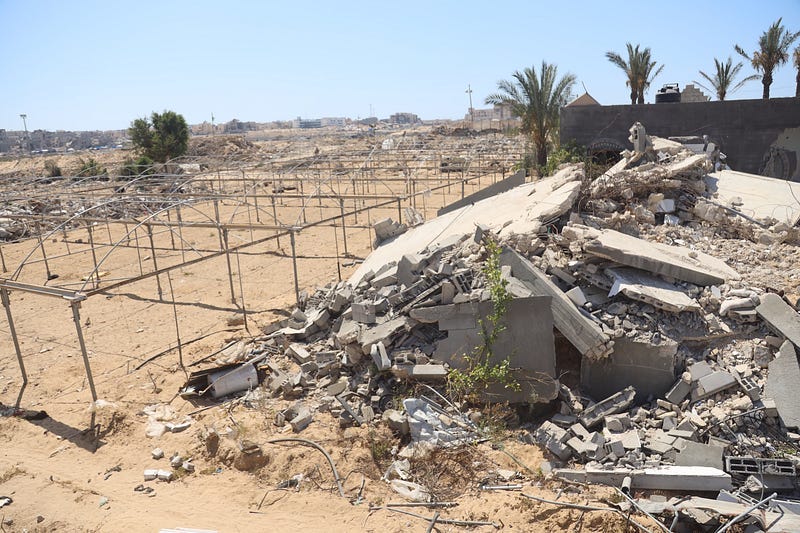
Israel’s attack on the agriculture and food sector in Gaza is an important plank of its strategy to use starvation as a weapon of war in Gaza. Thus, bakeries have been destroyed or rendered inoperative because of lack of fuel, electricity, water, and wheat flour. As of May 17, 2025, the IDF had destroyed 68 food and humanitarian distribution centers in the Strip. As a result, there was a near-total collapse of the food system in Gaza.
In March 2025, Israel imposed a complete ban on the entry of aid and commercial goods into Gaza and cut off electricity supplies to Gaza’s main desalination plant. To make matters worse, Israel sabotaged the January 2025 ceasefire with Hamas, and broke it on May 18, with the start of its Operation Gideon’s Chariots to release hostages held by Hamas and eliminate Hamas.
As a result of the IDF’s war, Gazans accounted for 80 percent of all people facing famine or catastrophic hunger worldwide, as of January 2024. By April 2025, 93 percent of Gazans were classified as being in a Phase 3 and above (Crisis, Emergency, or Catastrophe) state of food insecurity. As of June 11, 2025, 290,000 children under five and 150,000 pregnant and breastfeeding women required feeding and micronutrient supplements. Prime Minister Netanyahu, in a show of his callousness, denied that Palestinians are starving but, instead, were overweight.
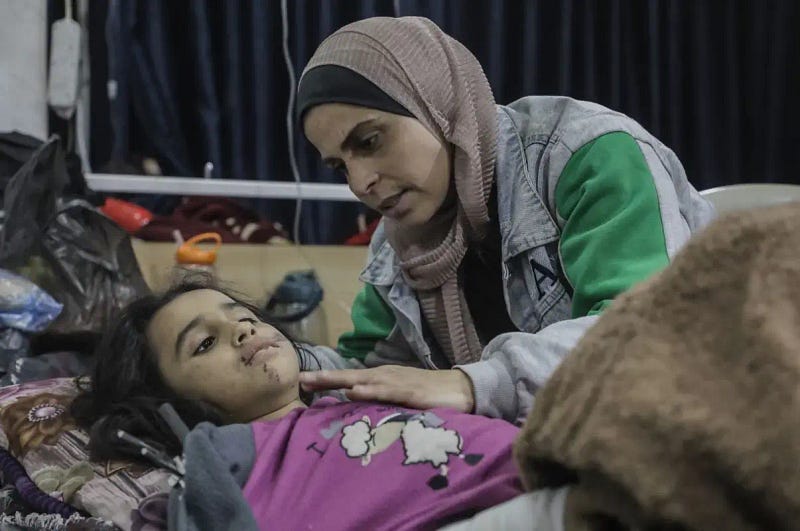
In a bid to deflect pressure to allow in more food aid into Gaza Israel, with support from the US government, created the US-registered Gaza Humanitarian Foundation (GHF) to distribute food in Gaza. The initiative was condemned by humanitarian groups, and the UN, because it is not independent, impartial, or neutral, or impartial and it weaponizes aid.
The IDF did exactly that, and has weaponized food by using it as a bait to lure starving Gazans to GHF food distribution points and, under orders, IDF troops shoots them everyday from aircrafts, drones and tanks. As of June 29, 2025, the IDF had killed 580 people, injured 4,216 people, and 39 people were missing in 34 days of GHF food distribution in Gaza. Understandably, many now call the GHF food distribution centers “death traps,” which could make the GHF liable for war crimes, crimes against humanity, or genocide.
Furthermore, the food packages distributed by the GHF are not enough, are of poor nutritional quality and, contrary to international humanitarian best practices, do not include infant formula and sanitary products for women. In contrast to the 400 distribution points that international humanitarian organizations used to distribute food aid in Gaza, the GHF only has 4 distribution points, which are situated from major population centers to inflict maximum suffering on starving Gazans. Even more ominously, the Gaza government officials reported in late June 2025 that some flour bags distributed by GHF in Gaza is laced with highly addictive opioids.
The IDF has also wiped out entire families, and as it has killed and maimed individuals in its ongoing war on Gaza, and has policies and tools to do just that. First, Israel in line with its Dahiya Doctrine, the IDF loosened its already lax rules on bombing non-military targets, and the minimization of collateral damage in its war on Gaza. These non-military targets include private residences, infrastructure and high-rise buildings (which the IDF calls “power targets”) thus dramatically increasing the number of civilian Palestinians killed as collateral damage in IDF strikes.
The IDF also developed artificial intelligence (AI) tools such as Habsora (“The Gospel”) which can automatically generate, at rates far beyond what humans are capable of, lists of target buildings and structures to bomb. In addition, the IDF developed the Lavender system to mark all suspected members of the military wings of the Palestinian Islamic Jihad (PIJ) and Hamas as potential bombing targets. These targets are then tracked using the Where is Daddy? AI tool and bombed when they enter their family homes. Sometimes, the target leaves the home before the bombing, and this, coupled with the 10 percent target selection error rate meant that the IDF killed many innocent people. These tools provided Israel with what has been called a “mass assassination factory” which has been put to inhumane and deadly use in Gaza.
As of July 2, 2025, the IDF killed 57,012 people in Gaza, and injured 134,592 since the start of its war on Gaza in October 2023. Israel resumed its “livestreamed genocide” in Gaza after the end of its ceasefire on March 18, 2025, and in 51 days of bombing, the IDF killed 2,545 people and injured 6,856. Furthermore, over 60 percent of those killed are children, women and the elderly.
The IDF has had a policy of bombing homes without giving their occupants advance notice, thus burying many under the rubble of their homes. As of May 8, 2025, the IDF has rained over 100,000 tons of bombs on Gaza, almost three times the combined equivalent TNT yield or tonnage of atomic bombs dropped on Hiroshima and Nagasaki in 1945 during World War II. Many of the bombs and missiles dropped on Gaza were unguided and imprecise so-called “dumb bombs” and were deliberately used to indiscriminately kill Palestinians.
The combination of heavy bombing, a callus attitude toward unjustifiable killing of innocent women, children and the elderly, as well as the use of AI tools has resulted in an unprecedented level of the mass killings during Israel’s ongoing war on Gaza. As of May 28, 2025, 2,483 Palestinian families were wiped out, with no surviving member. In addition, 5,620 Palestinian families had only one member alive after the IDF had wiped out the rest of them.
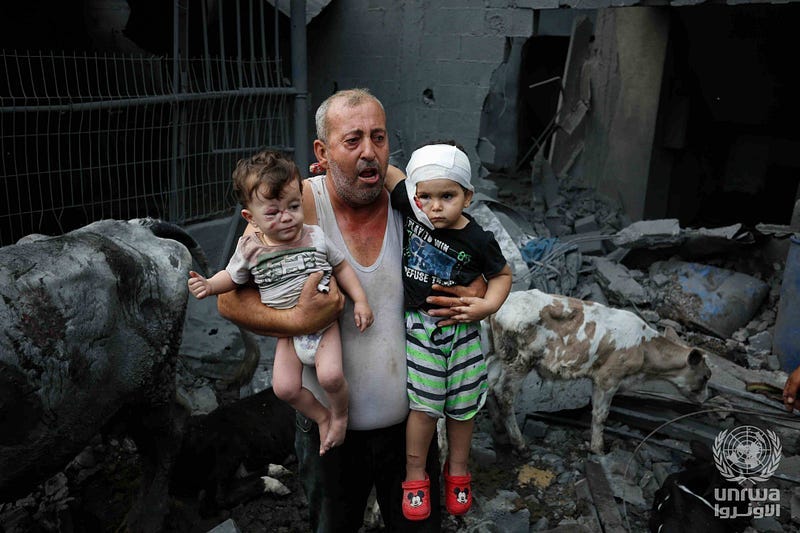
An estimated 28,000 women and girls have been killed in Gaza between October 2023 and May 2025 — an average of one woman and one girl being killed every hour in 20 months of Israel’s war on Gaza. Furthermore, about 60 thousand pregnant women were at risk because of the lack of healthcare caused by the near-total destruction of the healthcare system by the IDF.
By January 2024, there were at least 3,000 widows in Gaza, and by June 2025, there were 14,323 widows in Gaza, compared to 222 Israeli widows whose partners had died in the IDF war on Gaza. Miscarriages in Gaza had increased by at least 300 percent by January 2024, and by May 2025, lack of essential nutrients caused over 300 miscarriages.
Israel has also blocked the delivery of aid and medical supplies needed for reproductive health. As such, women in Gaza have had to endure C-sections without anesthetics, and because of lack of medicines to control postpartum bleeding, doctors have sometimes had to remove the uteruses of women after delivery to save their lives. These women will never be able to bear children again, which is very much in line with Israel’s aim to exterminate the Palestinians.
Pregnant and breastfeeding women also face daily challenges getting food and proper nutrition, with hospitals reporting a steep rise in the number of malnourished women and newborns. By April 2025, almost 17,000 breastfeeding women were projected to require treatment for acute malnutrition over the next 11 months.
By April 2024, an estimated 177,000 women in Gaza faced life-threatening health risks from non-communicable diseases (hypertension, diabetes mellitus, cardiovascular disease and cancer), as well as poor nutrition and hunger during pregnancy because of Israel’s war on Gaza. Similarly, an estimated 155 thousand breastfeeding and pregnant women face significant challenges in accessing antenatal and postnatal care. Gaza women also suffered mental health problems, with 75 percent of them regularly feeling depressed.
The deprivation and fear caused by the IDF’s war on Gaza has increased the risk of gender-based violence, and pre-conflict vulnerabilities of women such as poverty, breakdown of social safety nets, and family separation. In addition, the IDF have detained and subjected Palestinian women to various forms of abuse, including rape, forced nudity, and confiscation of sanitary pads.
Israel’s war on Gaza has been described as a “war on children,” as well as their childhood and future. In the first four months of the war, Israel killed 12,300 Palestinian children, more than the total number of children killed (12,193) in four years (2019–2022) in all conflicts around the world. As of May 28, 2025, the IDF killed over 18,000 children in Gaza since the start of its war on Gaza in October 2023.
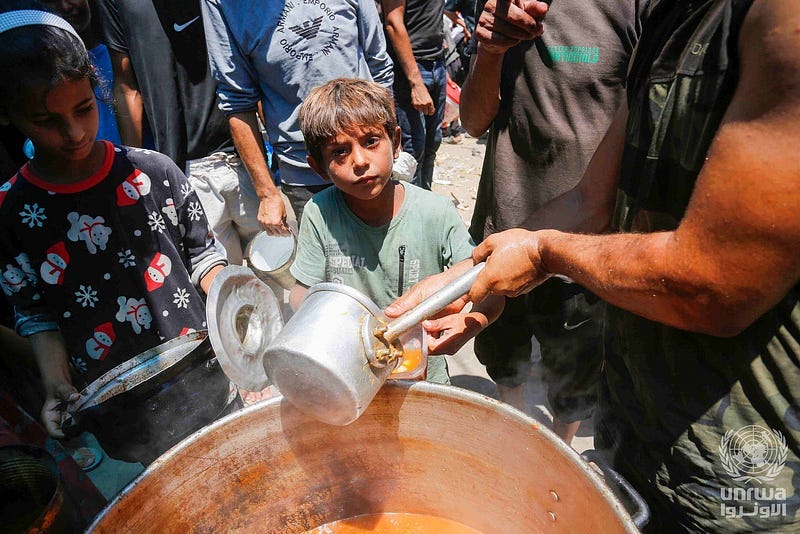
As of May 28, 2025, over 70 thousand children were at risk of death from hunger and malnutrition, 932 children killed were less than one year old, 53 children died from of malnutrition and starvation, and 14 children died from severe cold because of lack of proper housing and clothing. In November 2023, the IDF forced the evacuation of Al-Nasr hospital, leading to the death of babies because medical staff had no safe means of moving them, and were forced to abandon them in intensive care units.
The number of orphans in Gaza increased from an estimated 25,000 before the Israel invasion of October 2023 to over 39 thousand who have lost one or both parents in May 2025. Israel’s war on Gaza has also resulted in a new acronym, WCNSF (Wounded Child, No Surviving Family), which aptly describes the plight of many orphans in Gaza.
Israel’s war on Gaza also resulted to, as of November 2024, 3,000–4,000 child amputees in Gaza; the world’s largest cohort of child amputees in history. By January 2024, over 10 children per day were losing one or both of their legs, and by January 2025, 1,000 amputations of children were done without anesthesia. An entire generation of Gaza children has been traumatized, and by January 2025, one million of them required mental health and psychosocial support.
Israel had, by March 2025, arrested 1,055 children since the start of its war on Gaza. In July 2024, the Gaza Strip witnessed its first outbreak of polio in 25 years because of reduced vaccination rates, and by December 2024, the lives of around 7,700 newborn children were at risk because of lack of medical care, as well as shortage of medications, ventilators, and incubators.
Even the unborn are not safe from the Israel’s war on Gaza. In April 2024, the IDF destroyed 4,000 embryos and over 1,000 vials of unfertilized eggs and sperm when it shelled a fertility clinic. This act has been termed “reprocide,” the systematic targeting of reproductive health of a community with a view to eliminating their future.
The IDF’s attacks on Gaza’s children are deliberate, and part of a sinister plot to crush the hopes of Palestinians for their liberation and, as the UN has mandated, their right to return to their homeland. Indeed, Israeli leaders have called Palestinian children terrorists and Prime Minister Netanyahu has invoked quotations from the Bible to justify killing them.
The IDF has also forcibly displaced many Gazans, often more than once. These displacements are especially bitter for many of them who, in the first place, are in Gaza because of the forcible removal of 750 thousand Palestinians from their homes in the 1948 Nakba to make way for Jewish settlers after the founding of Israel.
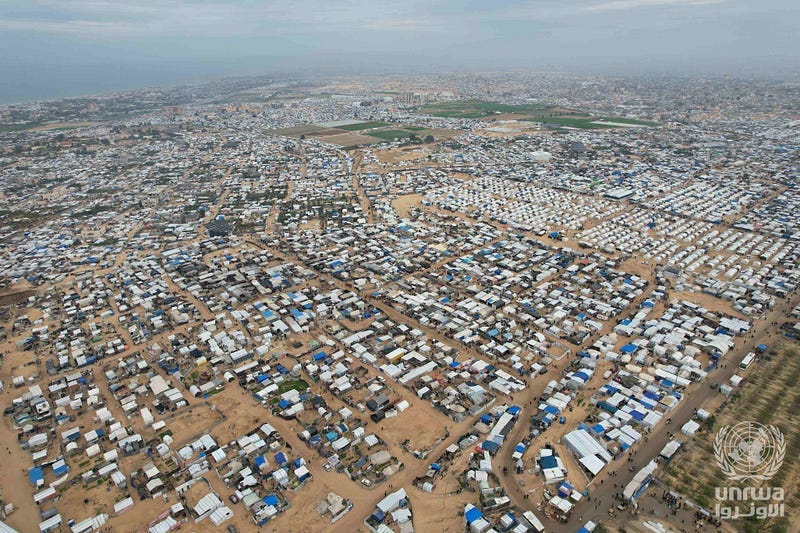
The IDF started the forcible displacement of Gazans in October 2023 supposedly to minimize civilian casualties in its war on Hamas. By October 2024, the IDF had forcibly displaced 1.9 million people (86.4 percent of the population), and by April 2025 had confined about 2.3 million Gazans to less than 34 percent of the 945 sq. Km (365 sq. miles) of Gaza. Furthermore, locations hosting internally displaced Gazans seeking refuge were bombed 380 times by IDF between January and November 2024. As at May 2025, about 81 percent of the Gaza Strip territory was an Israeli-militarized zone or under displacement orders, and effectively there was no safe place in Gaza.
One reason for the ease with which the IDF has conducted such blatant destruction, as well as deprivation and mass killings of Palestinians in Gaza is the dehumanization of Palestinians by Israelis. Although Palestinians also have often depicted Israelis as animals, Palestine simply cannot match the infrastructure and institutional support Israel provides Israelis for the dehumanization of Palestinians. Israelis are taught from first grade to the grave to dehumanize Palestinians and the dehumanization of Palestinian has, for a long time, been an integral part of Israeli lexicon. Thus, Golda Meir remarked in 1969 that “Palestinians did not exist,” and former Prime Minister Menachem Begin said in 1982 Palestinians are “beasts.”
Following the October 2023 Hamas attacks Israeli government officials built on this tradition of describing Palestinians as animals. Thus, Galit Distel-Atbaryan, a Member of Knesset (MK) called Gazans “monsters,” while Itamar Ben Gvir, Minister of National Security called Hamas blood thirsty “beasts” and “Nazis.” Similarly, Gilad Erdan, Israel’s UN ambassador said they were at “war with monsters,” while Dan Gillerman, the former Israeli ambassador to the UN, wondered why the world was concerned about the Palestinians who, in his judgement are “horrible inhuman animals,” and Israel’s Ambassador to Germany, Ron Prosor, called Hamas “bloodthirsty animals.” Such vitriol from Israeli government officials (including the President, Prime Minister, and government Ministers) was a key plank of South Africa’s case at the International Court of Justice accusing Israel of genocide.
Although many Palestinians oppose Hamas, and many Israelis are horrified by, and oppose Israel’s war on Gaza, we should at this point ask the following questions: i) Who are the real animals? ii) Are they Hamas and its allies who attacked Israel in October 2023, or Israeli Prime Minister Netanyahu and his Ministers, Knesset members, as well as the IDF personnel and other government officials prosecuting Israel’s war on Gaza?
The facts are that the October 2023 attack by Hamas and its allies on Israel resulted in 1,139 deaths, and Israel alleged, but could not provide supporting evidence, that Hamas had committed additional crimes such as rape against innocent Israelis. In retaliation, Israel attacked Gaza and has, as of July 2, 2025, killed 57,012 people, (a number said to underestimate the real death toll by 28 percent to 39 percent).
In addition, Israel’s IDF has tortured, summarily executed, detained, humiliated, starved, forcibly displaced, bombed, and shot Gazans since it invaded Gaza in October 2023, and continues to do so. The IDF has also turned Gaza into a wasteland by destroying homes, schools, hospitals, libraries, roads, power plants, solar power systems, sewage treatment plants, water supply systems, universities, schools, mosques, churches, telecommunications and internet infrastructure, media houses, factories, farmland, greenhouses, orchards, bakeries, vehicles, and ambulances, and museums and desecrating cemeteries.
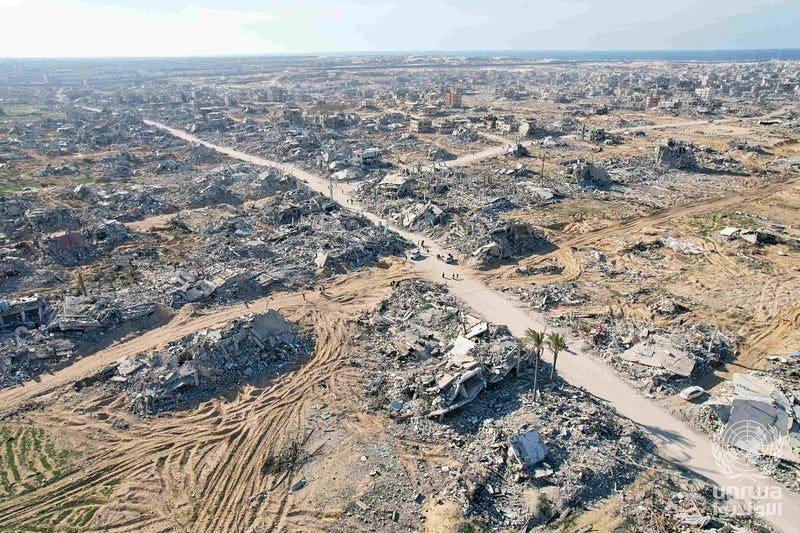
The IDF has thus committed crimes against humanity, war crimes, as well as violations of International Human Rights Law (IHRL), and International Humanitarian Law (IHL) in its ongoing war on Gaza. As an occupying power (and an illegal one at that), Israel has an obligation to abide by international laws to respect the rights of Palestinians in the prosecution of its fight against Hamas. Israel also has, under international law, the duty to protect civilians, the sick and wounded, refrain from collective punishment, and ensure that it provides food, water and healthcare to people in Gaza.
Instead, Israeli officials and the IDF have starved, forcibly displaced, tortured, sexually abused, and willfully killed Gazans, and intentionally destroyed civilian infrastructure; acts which, under international law, constitute war crimes. In addition, Israel has violated IHL by failing to adhere to the principles of distinction, proportionality and precaution, and by inflicting collective punishment on Gazans, and destroying their places of worship.
Israel has also committed crimes against humanity of extermination, murder, and gender persecution of men and boys in Gaza, and subjecting Gazans to degrading and inhumane treatment. Israel’s widespread destruction in Gaza also violates IHRL, including the rights to family life, housing, education, adequate food, water and sanitation, health, and social security, while its assaults on children and women violate the Convention on the Rights of the Child, and the Convention on the Elimination of All Forms of Discrimination against Women, respectively.
When Hamas and its allies brutally attacked Israel in October 2023, the then Israeli Minister of Defense Yoav Gallant declared Hamas and its allies “human animals.” Now, if Israel can call Hamas “human animals” because of their brutal attack on Israel killed 1,139 people, and Israel responded by killing over 57,000 Palestinians (and counting) and razed Gaza to the ground, who then are the real animals, Hamas or Israel? You decide. And please vote below.



